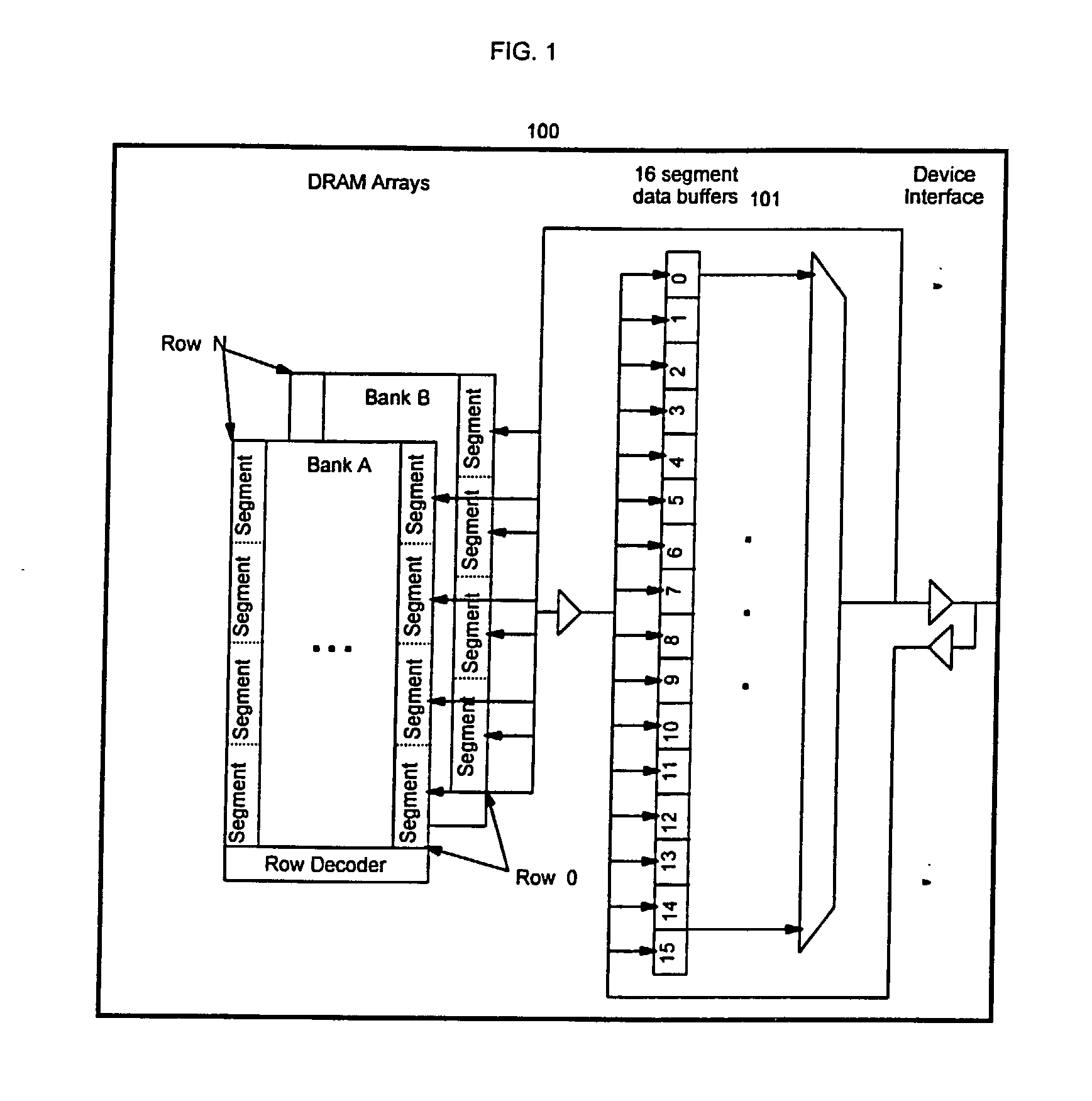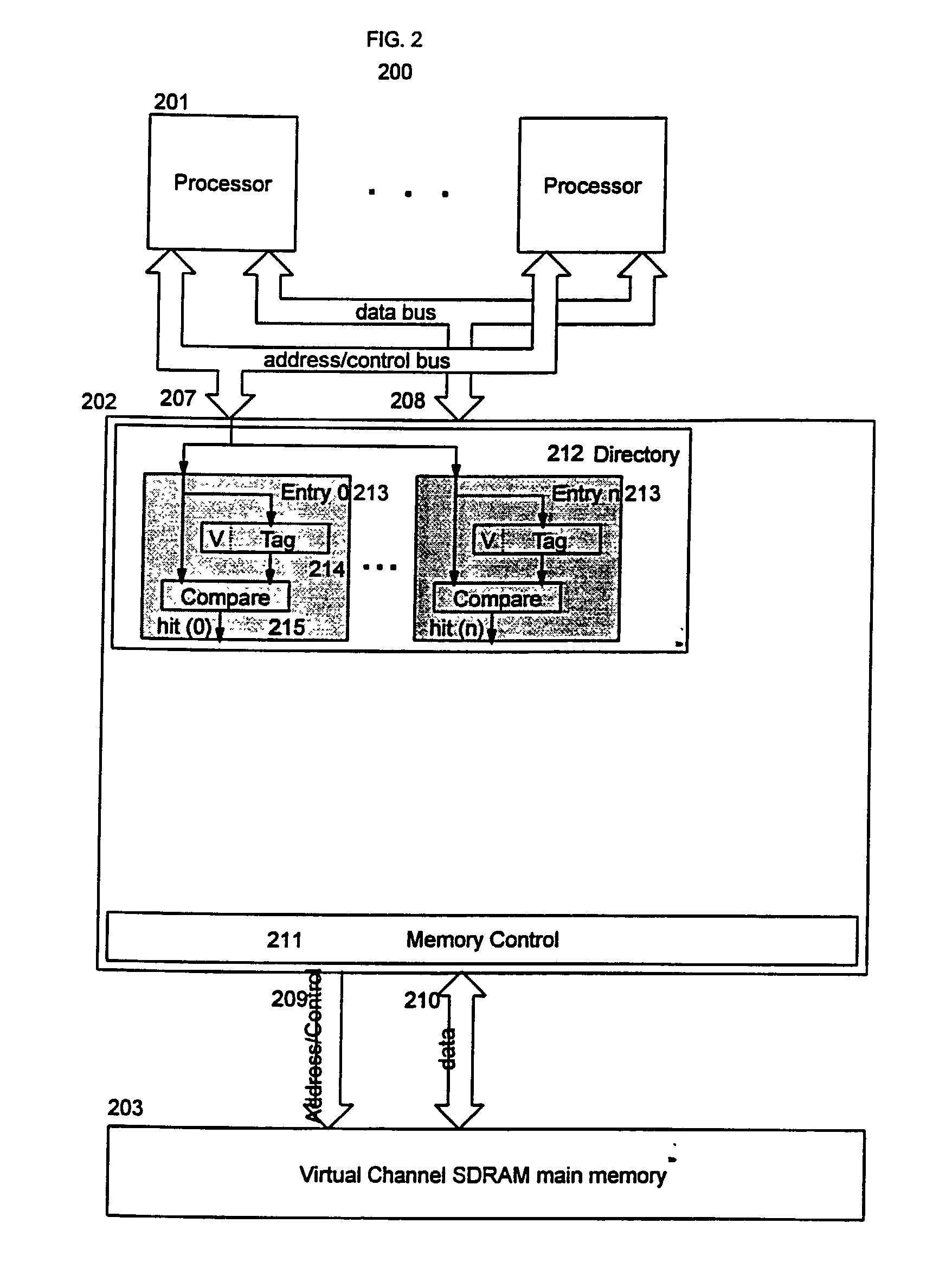System and method for dynamically allocating associative resources
a technology of dynamic allocation and resource, applied in memory adressing/allocation/relocation, program control, multi-programming arrangements, etc., can solve the problems of reducing system performance, competing agents repeatedly reallocating each other's resources, and resource size and amount limitations,
- Summary
- Abstract
- Description
- Claims
- Application Information
AI Technical Summary
Benefits of technology
Problems solved by technology
Method used
Image
Examples
Embodiment Construction
[0019] Referring now to the drawings, and more particularly to FIG. 1, there are shown preferred embodiments of the method and structures according to the present invention. The inherently high access latency associated with DRAM technology is mitigated by the "page mode" standard supported by SDRAM devices. This feature includes an internal low latency data register wide enough to contain an entire page or row of data bits from an associated internal bit array or "bank". The device interface protocol provides a means for a system application memory controller to "open" a row (load the register), "close" a row (write the register content back into the bank), or access the row register at low latency while it is "open". The system application memory controller functions to maintain as many "open" rows as are present in the system to achieve the lowest average access latency to the memory array. However, since only one row register is associated with a large block of storage, signific...
PUM
 Login to View More
Login to View More Abstract
Description
Claims
Application Information
 Login to View More
Login to View More - R&D
- Intellectual Property
- Life Sciences
- Materials
- Tech Scout
- Unparalleled Data Quality
- Higher Quality Content
- 60% Fewer Hallucinations
Browse by: Latest US Patents, China's latest patents, Technical Efficacy Thesaurus, Application Domain, Technology Topic, Popular Technical Reports.
© 2025 PatSnap. All rights reserved.Legal|Privacy policy|Modern Slavery Act Transparency Statement|Sitemap|About US| Contact US: help@patsnap.com



